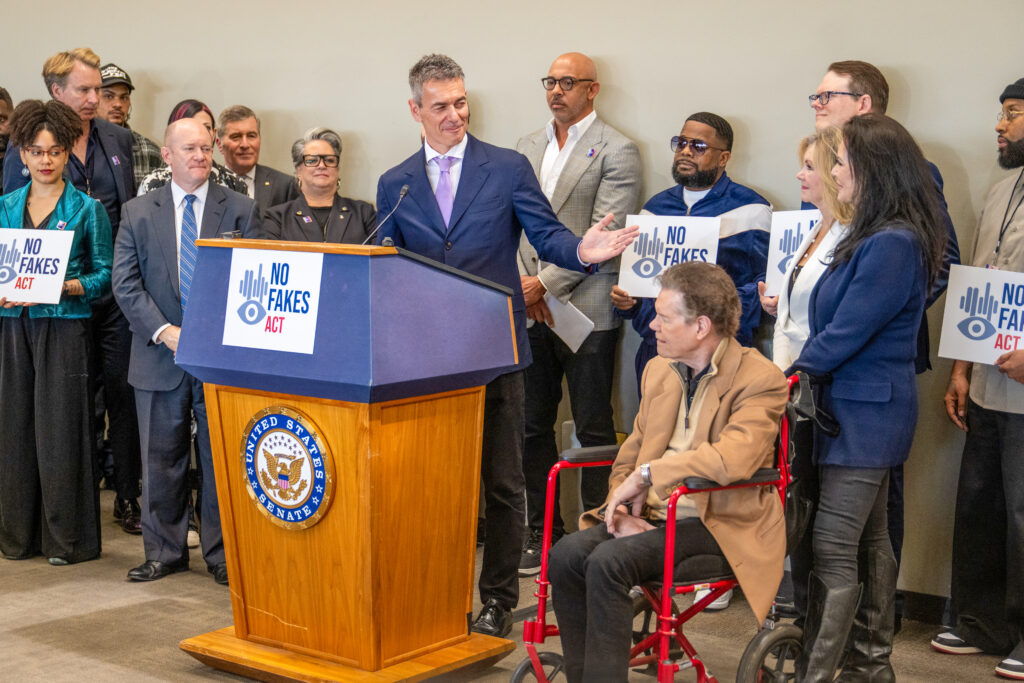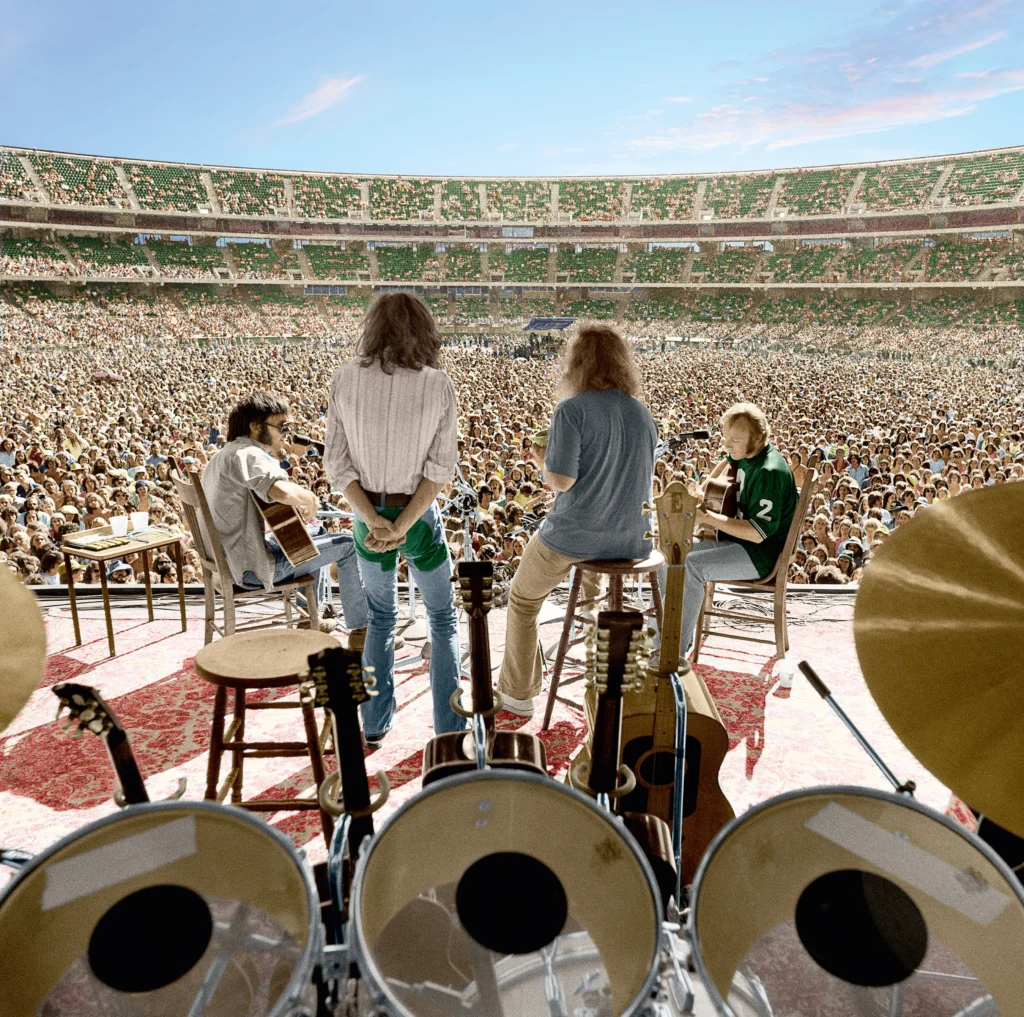- Total revenue grew 4.5% or was up 1.9% in constant currency
- Digital revenue grew 16.1% or was up 14.1% in constant currency
- Net income was $321 million versus $143 million in the prior-year quarter
- OIBDA was $99 million versus $115 million in the prior-year quarter
Warner Music Group Corp. today announced its third-quarter financial results for the period ended June 30, 2018.
“Amazing new music from our artists and songwriters and great execution from our global operators have driven our year-to-date revenue up 12%, or 7% in constant currency,” said Steve Cooper, Warner Music Group’s CEO. “While streaming continues to fuel our growth, we are exploring a wide array of creative and commercial opportunities in order to position ourselves for long-term success.”
“We are pleased with our revenue growth in the context of a very difficult prior-year comparison,” added Eric Levin, Warner Music Group’s Executive Vice President and CFO. “The health of our business is evidenced by our very strong cash generation.”
Total WMG

Revenue grew 4.5% (or 1.9% in constant currency). Growth in Recorded Music digital and licensing revenue and Music Publishing digital and synchronization revenue was partially offset by a decline in Recorded Music physical and artist services and expanded-rights revenue and Music Publishing performance and mechanical revenue. Revenue grew in the U.S., Asia and Latin America and declined in Europe due to a decrease in physical revenue and the impact of stronger releases in the prior-year quarter. Digital revenue increased 16.1% (or 14.1% in constant currency), and represented 60.1% of total revenue, compared to 54.1% in the prior-year quarter.
Operating income was $28 million compared to $51 million in the prior-year quarter. OIBDA declined 13.9% to $99 million from $115 million in the prior-year quarter and OIBDA margin declined 2.2 percentage points to 10.3% from 12.5% in the prior-year quarter. The decline in operating income, OIBDA and OIBDA margin was largely the result of higher SG&A including higher variable compensation expense, primarily attributable to the Company’s deferred compensation plan based on an increase in the fair value of the Company’s equity. OIBDA includes a $16 million advance recovery related to the sale of the Company’s Spotify shares. Adjusted OIBDA declined 9.1% and Adjusted OIBDA margin declined 1.7 percentage points to 11.5% due to the same factors which impacted OIBDA and OIBDA margin.
Net income was $321 million compared to $143 million in the prior-year quarter and Adjusted net income was $332 million compared to $149 million in the prior-year quarter. The increase was largely attributable to a $317 million gain (net of tax) on the sale of the Company’s Spotify shares and foreign currency gains on Euro-denominated debt, which were partially offset by foreign currency losses on intercompany loans as well as higher non-cash tax expense related to higher pre-tax income, the impact of a reversal in valuation allowance and the benefit of foreign currency losses in the prior-year quarter.
Adjusted operating income, Adjusted OIBDA and Adjusted net income exclude certain costs related to the relocation of the Company’s U.S. shared service center to Nashville, the Company’s Los Angeles office consolidation and restructuring in the quarter, and certain costs largely related to the Nashville relocation and PLG-related asset sales in the prior-year quarter. See below for calculations and reconciliations of OIBDA, Adjusted operating income, Adjusted OIBDA and Adjusted net income.
As of June 30, 2018, the Company reported a cash balance of $905 million, total debt of $2.814 billion and net debt (total long-term debt, which is net of deferred financing costs of $30 million, minus cash) of $1.909 billion.
Cash provided by operating activities was $129 million compared to $83 million in the prior-year quarter. The increase was largely a result of timing of working capital. Free Cash Flow, defined below, was $608 million compared to $89 million in the prior-year quarter, reflecting the change in cash provided by operating activities and the sale of the Company’s Spotify shares.
Recorded Music

Recorded Music revenue grew 4.2% (or 1.5% in constant currency). Growth in digital and licensing revenue was partially offset by a decline in physical and artist services and expanded-rights revenue. Digital growth reflects a continuing shift to streaming revenue and away from download and physical revenue. The increase in licensing revenue was largely related to currency. The decline in artist services and expanded-rights revenue was largely due to lower concert promotion activity. Recorded Music revenue grew in the U.S., Latin America and Asia but declined in Europe. Major sellers included The Greatest Showman soundtrack album, Ed Sheeran, Cardi B, Bruno Mars and Dua Lipa.
Recorded Music operating income was $67 million compared with $77 million in the prior-year quarter and operating margin declined 1.6 percentage points to 8.4%. OIBDA declined 4.2% to $115 million from $120 million in the prior-year quarter and OIBDA margin declined 1.3 percentage points to 14.3% driven by higher SG&A. Adjusted OIBDA was $124 million compared with $125 million in the prior-year quarter, and Adjusted OIBDA margin was down 0.7 percentage points to 15.5% due to the same factors which impacted OIBDA.
Music Publishing

Music Publishing revenue rose 6.0% (or 3.9% in constant currency). Growth in digital revenue, led by streaming, and in synchronization revenue was partially offset by a decline in performance and mechanical revenue.
Music Publishing operating income was $5 million, compared with $6 million in the prior-year quarter. Music Publishing OIBDA rose by $1 million to $24 million and Music Publishing OIBDA margin declined by 0.2 percentage points to 15.1%.
Financial details for the quarter can be found in the Company’s current Form 10-Q, for the period ended June 30, 2018, filed today with the Securities and Exchange Commission.
This morning, management will host a conference call to discuss the results at 8:30 A.M. EST. The call will be webcast at www.wmg.com.
About Warner Music Group
With its broad roster of new stars and legendary artists, Warner Music Group is home to a collection of the best-known record labels in the music industry, including Asylum, Atlantic, Big Beat, Canvasback, East West, Elektra, Erato, FFRR, Fueled by Ramen, Nonesuch, Parlophone, Reprise, Rhino, Roadrunner, Sire, Spinnin’, Warner Bros., Warner Classics and Warner Music Nashville, as well as Warner/Chappell Music, one of the world’s leading music publishers with a catalog of more than one million copyrights worldwide.
“Safe Harbor” Statement under Private Securities Litigation Reform Act of 1995
This communication includes forward-looking statements that reflect the current views of Warner Music Group about future events and financial performance. Words such as “estimates,” “expects,” “anticipates,” “projects,” “plans,” “intends,” “believes,” “forecasts” and variations of such words or similar expressions that predict or indicate future events or trends, or that do not relate to historical matters, identify forward-looking statements. All forward-looking statements are made as of today, and we disclaim any duty to update such statements. Our expectations, beliefs and projections are expressed in good faith and we believe there is a reasonable basis for them. However, we cannot assure you that management’s expectations, beliefs and projections will result or be achieved. Investors should not rely on forward-looking statements because they are subject to a variety of risks, uncertainties, and other factors that could cause actual results to differ materially from our expectations. Please refer to our Annual Report on Form 10-K, Quarterly Report on Form 10-Qs and our other filings with the U.S. Securities and Exchange Commission concerning factors that could cause actual results to differ materially from those described in our forward-looking statements.
We maintain an Internet site at www.wmg.com. We use our website as a channel of distribution for material company information. Financial and other material information regarding Warner Music Group is routinely posted on and accessible at https://investors.wmg.com. In addition, you may automatically receive email alerts and other information about Warner Music Group by enrolling your email address through the “email alerts” section at https://investors.wmg.com. Our website and the information posted on it or connected to it shall not be deemed to be incorporated by reference into this communication.
Basis of Presentation
The Company maintains a 52-53 week fiscal year ending on the last Friday in each reporting period. As such, all references to June 30, 2018 and June 30, 2017 relate to the periods ended June 29, 2018 and June 30, 2017, respectively. For convenience purposes, the Company continues to date its financial statements as of June 30. The fiscal year ended September 30, 2017 ended on September 29, 2017.




Supplemental Disclosures Regarding Non-GAAP Financial Measures
We evaluate our operating performance based on several factors, including the following non-GAAP financial measures:
OIBDA
OIBDA reflects our operating income before non-cash depreciation of tangible assets and non-cash amortization of intangible assets. We consider OIBDA to be an important indicator of the operational strengths and performance of our businesses, and believe the presentation of OIBDA helps improve the ability to understand our operating performance and evaluate our performance in comparison to comparable periods. However, a limitation of the use of OIBDA as a performance measure is that it does not reflect the periodic costs of certain capitalized tangible and intangible assets used in generating revenue in our businesses. Accordingly, OIBDA should be considered in addition to, not as a substitute for, operating income (loss), net income (loss) and other measures of financial performance reported in accordance with U.S. GAAP. In addition, OIBDA, as we calculate it, may not be comparable to similarly titled measures employed by other companies.


Adjusted Operating Income (Loss), Adjusted OIBDA and Adjusted Net Income (Loss)
Adjusted operating income (loss), Adjusted OIBDA and Adjusted net income (loss) is operating income (loss), OIBDA and net income (loss), respectively, adjusted to exclude the impact of certain items that affect comparability. Factors affecting period-to-period comparability of the unadjusted measures in the quarter included the items listed in Figure 8 below. We use Adjusted operating income (loss), Adjusted OIBDA and Adjusted net income (loss) to evaluate our actual operating performance. We believe that the adjusted results provide relevant and useful information for investors because they clarify our actual operating performance, make it easier to compare our results with those of other companies in our industry and allow investors to review performance in the same way as our management. Since these are not measures of performance calculated in accordance with U.S. GAAP, they should not be considered in isolation of, or as a substitute for, operating income (loss), OIBDA and net income (loss) attributable to Warner Music Group Corp. as indicators of operating performance, and they may not be comparable to similarly titled measures employed by other companies.


Constant Currency
Because exchange rates are an important factor in understanding period-to-period comparisons, we believe the presentation of revenue on a constant-currency basis in addition to reported revenue helps improve the ability to understand our operating results and evaluate our performance in comparison to prior periods. Constant-currency information compares results between periods as if exchange rates had remained constant period over period. We use results on a constant-currency basis as one measure to evaluate our performance. We calculate constant-currency results by applying current-year foreign currency exchange rates to prior-year results. However, a limitation of the use of the constant-currency results as a performance measure is that it does not reflect the impact of exchange rates on our revenue. These results should be considered in addition to, not as a substitute for, results reported in accordance with U.S. GAAP. Results on a constant-currency basis, as we present them, may not be comparable to similarly titled measures used by other companies and are not a measure of performance presented in accordance with U.S. GAAP.


Free Cash Flow
Free Cash Flow reflects our cash flow provided by operating activities less capital expenditures and cash paid or received for investments. We use Free Cash Flow, among other measures, to evaluate our operating performance. Management believes Free Cash Flow provides investors with an important perspective on the cash available to fund our debt service requirements, ongoing working capital requirements, capital expenditure requirements, strategic acquisitions and investments, and any dividends, prepayments of debt or repurchases or retirement of our outstanding debt or notes in open market purchases, privately negotiated purchases or otherwise. As a result, Free Cash Flow is a significant measure of our ability to generate long-term value. It is useful for investors to know whether this ability is being enhanced or degraded as a result of our operating performance. We believe the presentation of Free Cash Flow is relevant and useful for investors because it allows investors to view performance in a manner similar to the method management uses.
Because Free Cash Flow is not a measure of performance calculated in accordance with U.S. GAAP, Free Cash Flow should not be considered in isolation of, or as a substitute for, net income (loss) as an indicator of operating performance or cash flow provided by operating activities as a measure of liquidity. Free Cash Flow, as we calculate it, may not be comparable to similarly titled measures employed by other companies. In addition, Free Cash Flow does not necessarily represent funds available for discretionary use and is not necessarily a measure of our ability to fund our cash needs. Because Free Cash Flow deducts capital expenditures and cash paid or received for investments from “net cash provided by operating activities” (the most directly comparable U.S. GAAP financial measure), users of this information should consider the types of events and transactions that are not reflected. We provide below a reconciliation of Free Cash Flow to the most directly comparable amount reported under U.S. GAAP, which is “net cash provided by operating activities.”



